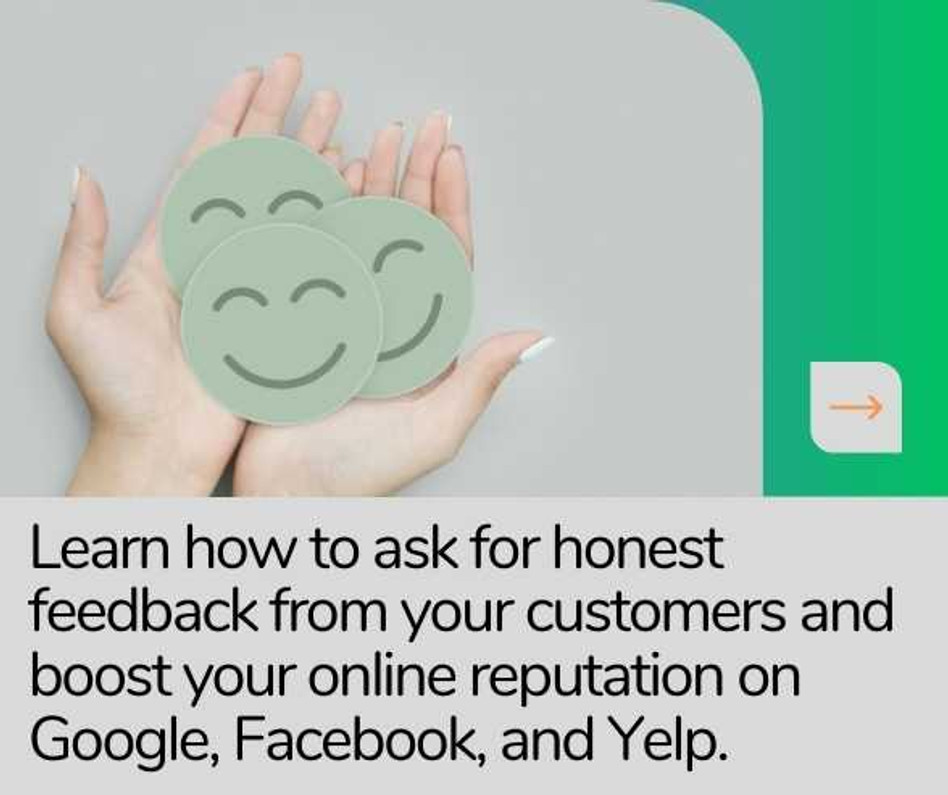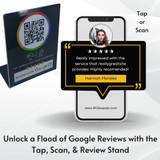Mastering the Art of Asking for Customer Reviews on Google, Facebook, and Yelp
In today's digital age, customer reviews wield immense power, influencing purchasing decisions and shaping brand reputations. With the proliferation of online review platforms, such as Google, Facebook, and Yelp, businesses have a unique opportunity to harness the potential of customer feedback. In this article, we'll delve into effective strategies for soliciting reviews on these platforms while adhering to their guidelines and enhancing your online presence.
The Power of Customer Reviews
Before we dive into platform-specific strategies, let's understand the importance of customer reviews. A whopping 90% of consumers read online reviews before making a purchase decision, making reviews a cornerstone of brand credibility and trust. Third-party review platforms consolidate customer opinions and testimonials, providing invaluable insights and social proof that resonate with potential customers.
Asking for Reviews: The Direct vs. Indirect Approach
When it comes to requesting reviews, businesses can adopt either a direct or indirect approach. Direct requests involve explicit prompts that explicitly ask for reviews, while indirect requests are subtly placed in marketing materials. Indirect requests seamlessly integrate review requests into existing content, such as mentioning your presence on review sites without explicitly asking for reviews. Balancing both approaches can engage customers effectively.
Asking for Google Reviews
Google reviews play a pivotal role in bolstering local SEO rankings and building trust among potential customers. To solicit reviews on Google:
- Timing is Key: Ask for reviews when customers are most satisfied. This could be shortly after a purchase or immediately after delivering stellar service. For product-based businesses, allow customers time to experience the product before requesting a review.
- Direct Requests: Leverage Google's direct review request feature. Politely encourage customers to "Leave us a review on Google," taking advantage of this convenient option.
- Personalized Emails: Send personalized emails with your Google review link. Aim for timely review asks, especially for service-based businesses where immediacy matters.
Asking for Yelp Reviews
While Yelp prohibits direct review solicitations, businesses can tactfully encourage reviews:
- Indirect Requests: Mention your Yelp page in newsletters, emails, and website buttons. Use creative and subtle approaches to make customers aware of your Yelp presence.
Asking for Facebook Reviews
Facebook's recommendation system enables customers to share positive experiences. To gather reviews on Facebook:
- Direct and Indirect Approaches: Directly ask for reviews in posts, making it easy for customers to contribute without leaving your page. You can also publish posts highlighting glowing reviews and encouraging further recommendations.
- Leverage Check-ins: Encourage customers to check into your business profile on Facebook, triggering review requests a few days after check-in. This approach is particularly effective for businesses with a physical location.
Balancing Automation and Personalization
Utilizing reputation management platforms or software can streamline review requests. Automate review emails, triggered after a set period or based on NPS survey responses. However, be cautious not to sacrifice personalization for efficiency, as customers often respond better to personalized requests.
Prime Review Sites and Targeted Asks
Identify review platforms with significant potential to bolster your brand's reputation. Major general review sites like Google, Yelp, and Facebook are crucial. For niche industries, prioritize industry-specific platforms like Capterra for software companies.
Incentives and Guidelines
While it's tempting to offer incentives, refrain from doing so for Google reviews, as it violates their policies. Similarly, avoid incentivizing Yelp reviews directly. Instead, focus on delivering exceptional service and encouraging satisfied customers to share their experiences.
Crafting Effective Review Requests
Whether you're aiming for Google, Yelp, or Facebook reviews, here are some key tips to craft compelling review requests:
- Personalization: Tailor your requests to your best customers. Acknowledge their loyalty and positive experiences.
- Timeliness: Choose the right moment to ask for reviews. Capture the customer's satisfaction when it's at its peak.
- Clarity and Simplicity: Keep your requests clear, concise, and easy to understand.
- Call to Action: Include a clear call to action, guiding customers on how to leave a review.
- Platform Relevance: Adapt your requests based on the platform. Highlight the unique features of each platform, like Facebook's recommendation system.
Conclusion
Asking for customer reviews on Google, Facebook, and Yelp is a nuanced process that requires a blend of strategy, timing, and platform-specific approaches. By understanding the guidelines of each platform and employing personalized, genuine requests, businesses can harness the power of customer feedback to amplify their online reputation, build trust, and attract new customers. Embrace the art of requesting reviews and witness the transformative impact it can have on your brand's digital journey.
Q&A
Q1: What is the Tap Review Card?
The Tap Review Card is an innovative tool designed to enhance your online reputation by making it effortless to collect and share glowing 5-star reviews from platforms like Google, Yelp, Facebook, and more.
Q2: How does the Tap Review Card work?
The Tap Review Card uses NFC tap technology. When you have a satisfied customer, you can tap the card to their smartphone, guiding them directly to your review page. They can easily leave a star rating or add additional context.
Q3: Can the Tap Review Card be used with any smartphone?
Yes, the Tap Review Card works flawlessly with all smartphone models, eliminating the need for additional apps or compatibility concerns.
Q4: What benefits does the Tap Review Card offer?
The Tap Review Card provides several benefits, including unlimited taps for requesting reviews, versatile linking options to various review platforms, and the convenience of a one-time purchase without subscription hassles.
Q5: How can the Tap Review Card help with local SEO?
By encouraging satisfied customers to leave reviews on platforms like Google, the Tap Review Card contributes to higher local SEO rankings, making your business more visible to potential customers in your area.
Q6: Can I customize the Tap Review Card's linking options?
Yes, the Tap Review Card is reprogrammable, allowing you to customize its linking options based on your preferred review platforms and websites.
Q7: Is asking for reviews on Google and Yelp straightforward?
While Google allows direct review requests, Yelp prefers indirect asks. You can mention your Yelp page in newsletters, emails, or website buttons, adhering to their guidelines.
Q8: What are some strategies for soliciting reviews on Facebook?
On Facebook, you can directly ask for reviews in posts, share glowing reviews, encourage customers to check into your business profile, or send personalized email review requests to your best customers.
Q9: Can I automate review requests?
Yes, reputation management platforms or software can help automate review requests. However, balancing automation with personalization is crucial to maintain a genuine connection with customers.
Q10: Are incentives allowed for soliciting reviews?
While it's best to avoid incentivizing reviews, as it goes against policies on platforms like Google and Yelp, you can focus on delivering exceptional service to encourage customers to share their positive experiences.
Recent Posts
-
The Secret Weapon for Local Businesses: Unlock a Flood of Google Reviews with the Tap, Scan, & Review Stand
In today's digital age, online reviews are the lifeblood of any local business. Positive reviews bui …6th Apr 2024 -
Boost Your Real Estate Business with NFC Tap Cards for More Reviews
Real estate reviews are essential for building trust with potential clients and ranking higher in se …6th Apr 2024 -
NFC detection area for Samsung phones
Samsung Galaxy Z Fold4 5G Samsung Galaxy Z Fold3 5G Samsung Galaxy Z Fold2 5G Samsung Gal …14th Nov 2023



